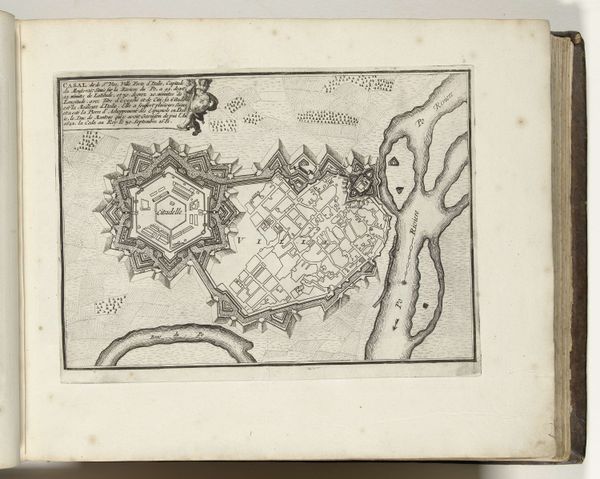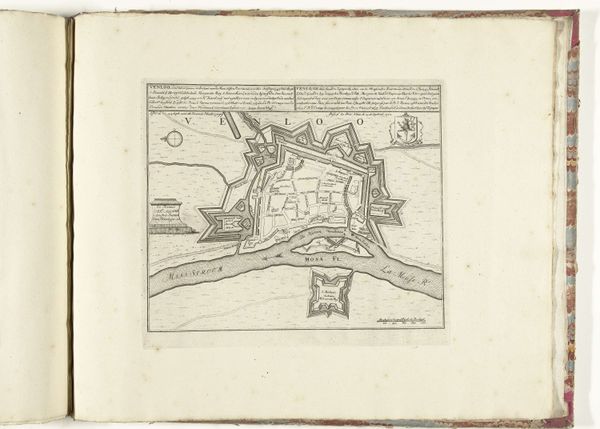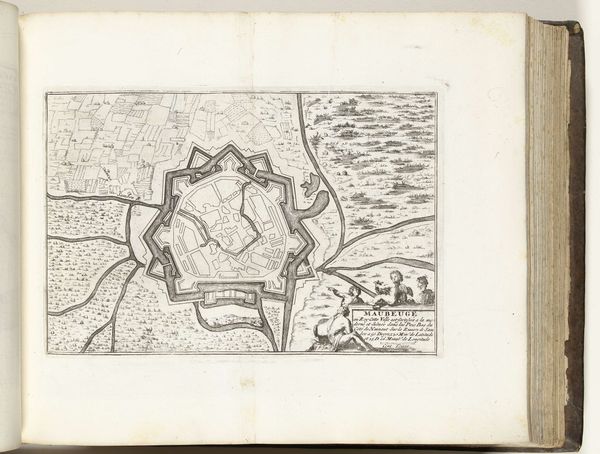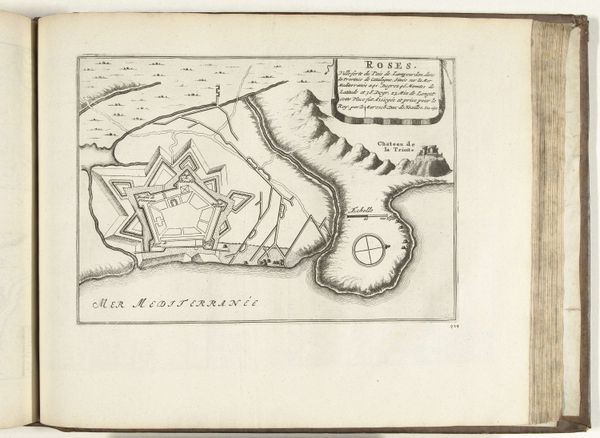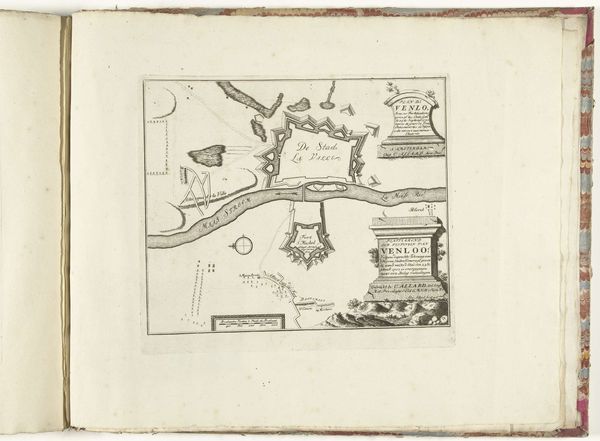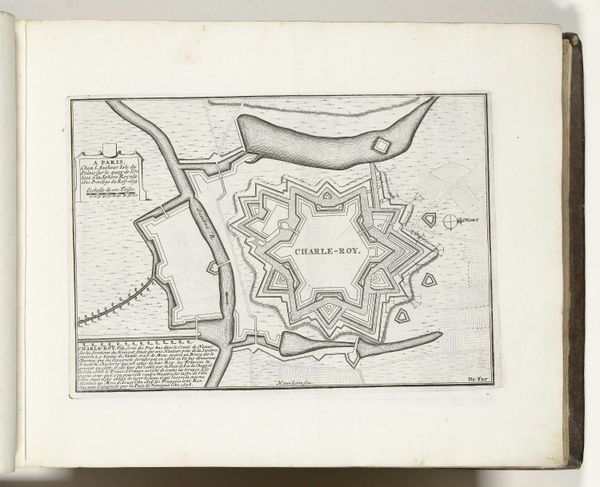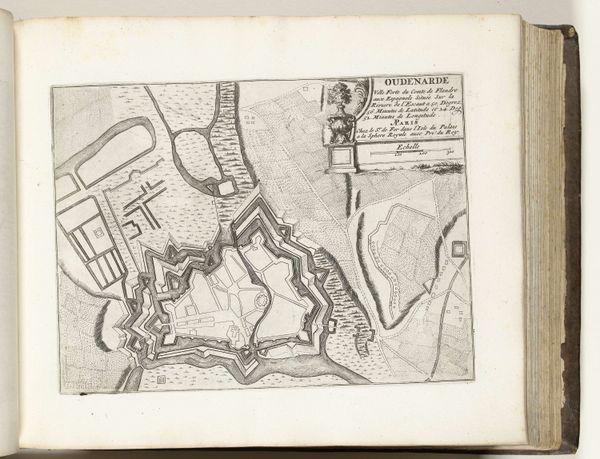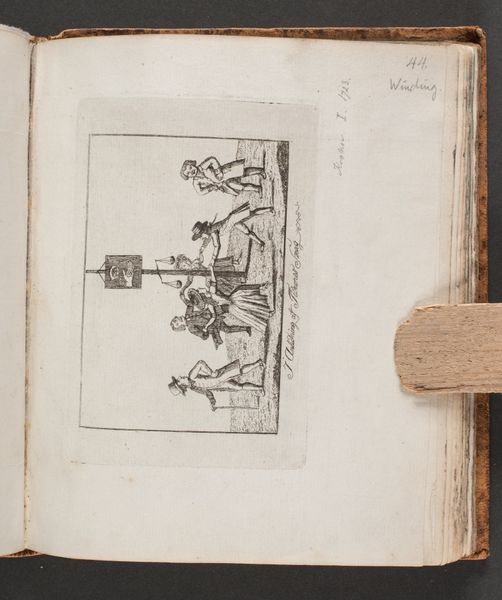
drawing, print, paper, ink, engraving
#
drawing
#
baroque
# print
#
paper
#
ink
#
cityscape
#
engraving
Dimensions: height 173 mm, width 195 mm
Copyright: Rijks Museum: Open Domain
Curator: This drawing, dating to 1693, is a plan of the city of Jülich by Harmanus van Loon. It's rendered in ink on paper, using an engraving technique to create the intricate lines of the cityscape. What’s your first take? Editor: It strikes me as remarkably precise, almost sterile. It presents Jülich as an engineered space, dominated by military fortifications. You immediately get the sense of strategic planning and the ever-present threat of conflict that shaped these cityscapes. Curator: Absolutely. It reflects the political climate of the late 17th century, when city planning was heavily influenced by military considerations. These "star forts," with their projecting bastions, were designed to withstand cannon fire and give defenders clear fields of fire. Jülich was essentially a chess piece in a much larger game. Editor: Exactly. It begs the question of who this map was really for. The precise detail wasn’t necessarily for the general populace, but rather, it empowered those holding positions of authority and likely contributed to oppression by bolstering strategic military advantage. There's something unsettling about its dispassionate representation. Curator: These kinds of prints and drawings served multiple purposes. Yes, strategic and military planning were crucial, but they were also instruments of power and prestige. They symbolized control over territory and could also act as propaganda. Remember that publishing images was tightly controlled. Editor: Which leads to the important questions about perspective and power. This map, like all cartography, reflects a specific viewpoint and agenda. Whose story is prioritized, and whose is marginalized or erased? I imagine a very different representation from the inhabitants within the fortifications. Where’s the marketplace, the common life? Curator: A vital point. What this work shows us is that our view of a city can change drastically, based on the perspective presented. As the image focuses almost exclusively on the fortresses and very little is dedicated to everyday life, what emerges here is that for its time, military strategy had dominance. Editor: In that regard, the artist did an exemplary job communicating its significance to its targeted audience and its position in the grander scheme. Now I will carry that in mind and wonder where it applies today. Curator: I find myself pondering how our contemporary landscape of images can shift just as easily by privileging only certain images and voices while overshadowing others. A simple reminder about imagery’s importance.
Comments
No comments
Be the first to comment and join the conversation on the ultimate creative platform.
